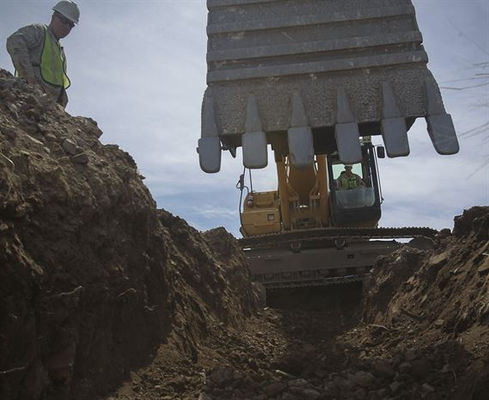WV Local Technical Assistance Program
Tailgate Safety Talks
Trenching Checklist
This Tailgate Talk is part of the NLTAPA collection.

BEFORE TRENCHING WORK BEGINS
Check soil conditions or other materials to be excavated.
Check the proximity of utilities, buildings, and sources of vibration.
Contact owners of utilities, service lines, or transmission piping and arrange shutdown or relocation if necessary.
Call Digsafe or your local state authority to mark the location of underground utilities.
Check for overhead hazards and power lines and for previously disturbed soil.
Check for trees, boulders, or other potential hazards.
Check the adequacy and availability of all equipment, including personal protective equipment (PPE), shoring materials, signs, barricades, and machinery.
DURING THE TRENCHING OPERATION
Monitor changing ground conditions, especially after rain.
Check for possible oxygen deficiency or hazardous gases.
Verify adequacy of shoring and/or sloping as work progresses.
Maintain safe entrance and exit methods.
Inspect all sheeting, bracing, shoring, and underpinning.
Observe changes in vehicular and equipment operations near the trench.
AFTER THE TRENCH IS OPEN AND WORK IS UNDERWAY
Check the sloping of banks, sides, and walls, considering trench depth, soil type, water content, and vibrations.
Confirm that entrance and exit methods are maintained, with ladders no more than 25 feet apart.
Check the location and movement of heavy equipment, loaders, backhoes, and dump trucks.
Ensure that excavated material is at least 2 feet from the edge of the trench.
Inspect the adequacy of trench boxes or trench shields, if used.

